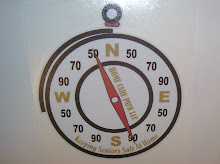Bleeding in the gastro intestinal tract (GI Bleed) can be due to inflammation (gastritis) and breaks in the integrity (ulcers) of the lining of the GI tract. This bleeding is not visible to the naked eye. Medical staff of the hospital's GI department have been trained to assess the severity of a GI bleed.
The first signs of a GI bleed are weakness, anxiety, and excessive perspiration. With a GI bleed the senior is losing red blood cells (RBC). Red blood cells carry the oxygen and nutrients to feed the internal perimeter of the body. When red blood cells have been lost due to a GI bleed the senior will feel fatigued and may feel short of breath.
Blood loss can cause the body temperature to rise. The senior may spike a body temperature greater than 98.6 degrees. The bowel can become hyperactive due to sensitivity to the blood. The bowel will emit hyperactive bowel sounds which can be heard with a stethoscope.
The blood loss can cause a reduction in the blood pressure. The nervous system releases catecholamines, epinephrine, and nor epinephrine to increase the heart rate and constrict the vessels to keep blood pressure up. The heart beats faster to send more blood through the vessels. The vessels constrict, tighten making the body believe the amount of blood is staying the same. This compensates for the loss of blood.
GI bleeds can be chronic or acute. An acute GI bleed comes on and is over fairly quickly. A chronic GI bleed continues for a long time, has a long duration. An acute GI bleed means it has been corrected and is not continueing to show itself (leaking more blood). A chronic GI bleed indicates the blood loss has been slowed, but is continueing. With the chronic GI bleed ongoing monitoring with diagnostic testing is required. Every so often the senior would receive a blood transfusion to replace the loss.
Diagnositic testing for GI bleed involves monitoring the levels of hemoglobin (HGB), hematocrit (HCT), and white blood cell (WBC) count. Normal hemoglogin values for a male are 13-18, for a female are 12-16, with a GI bleed values will read lower. Normal hematocrit values for a male are 45-52, for a female are 37-48, with a GI bleed the values will read lower. Normal white blood cell values are 4.3-10.8, with a GI bleed the values will read higher.
Home Care Path www.homecarepath.com staff can help seniors organize provider appointment schedules.
Wednesday, September 8, 2010
Subscribe to:
Post Comments (Atom)

No comments:
Post a Comment